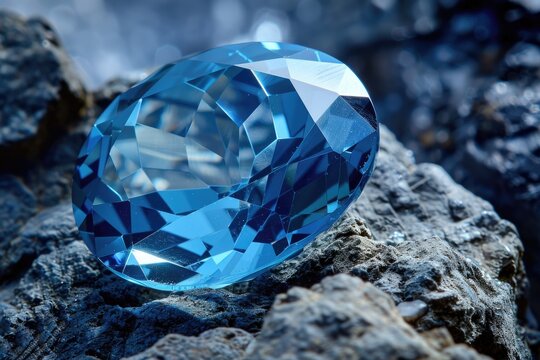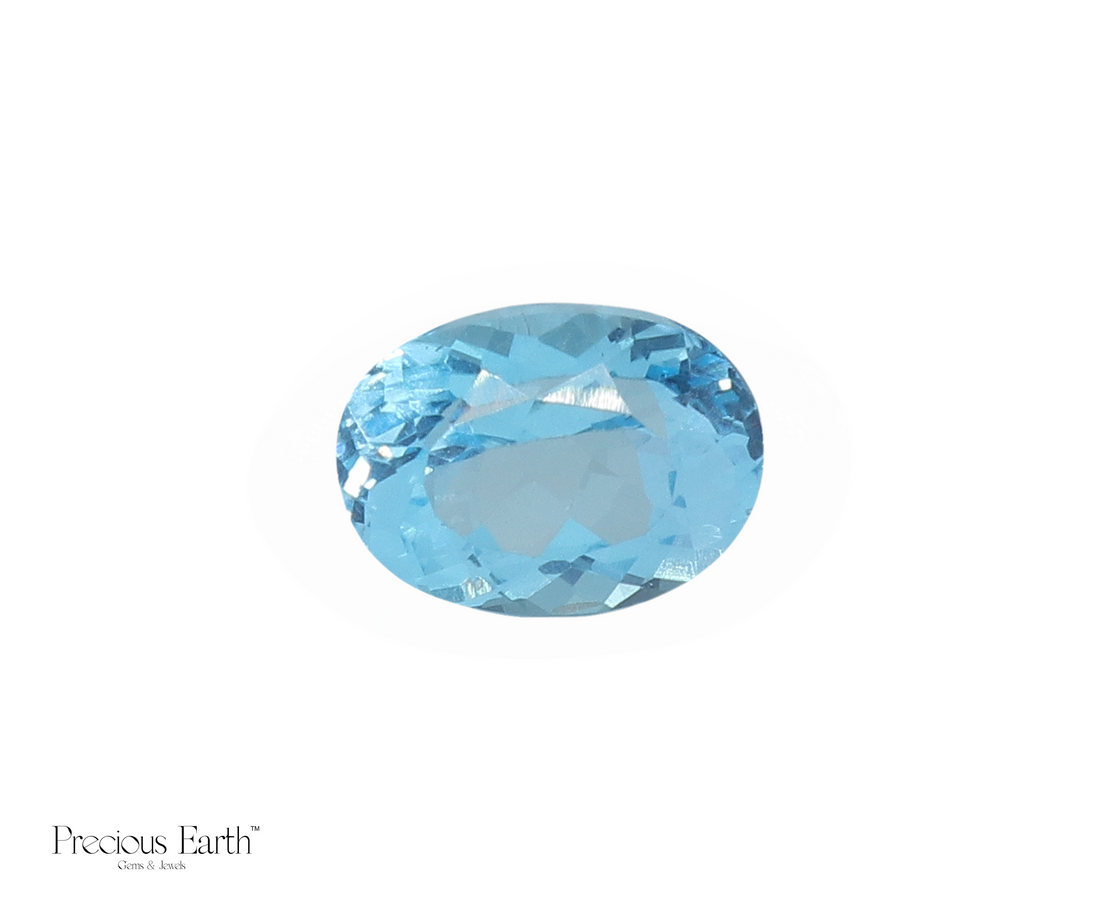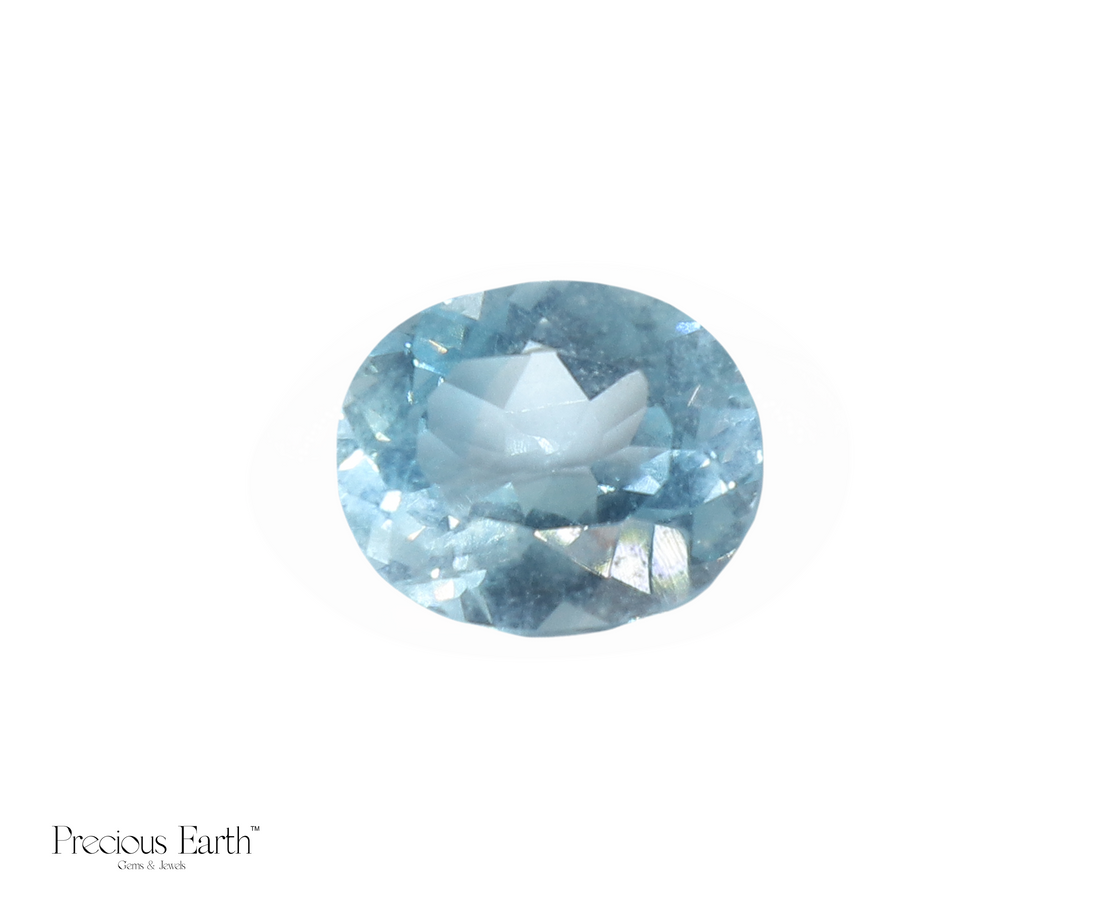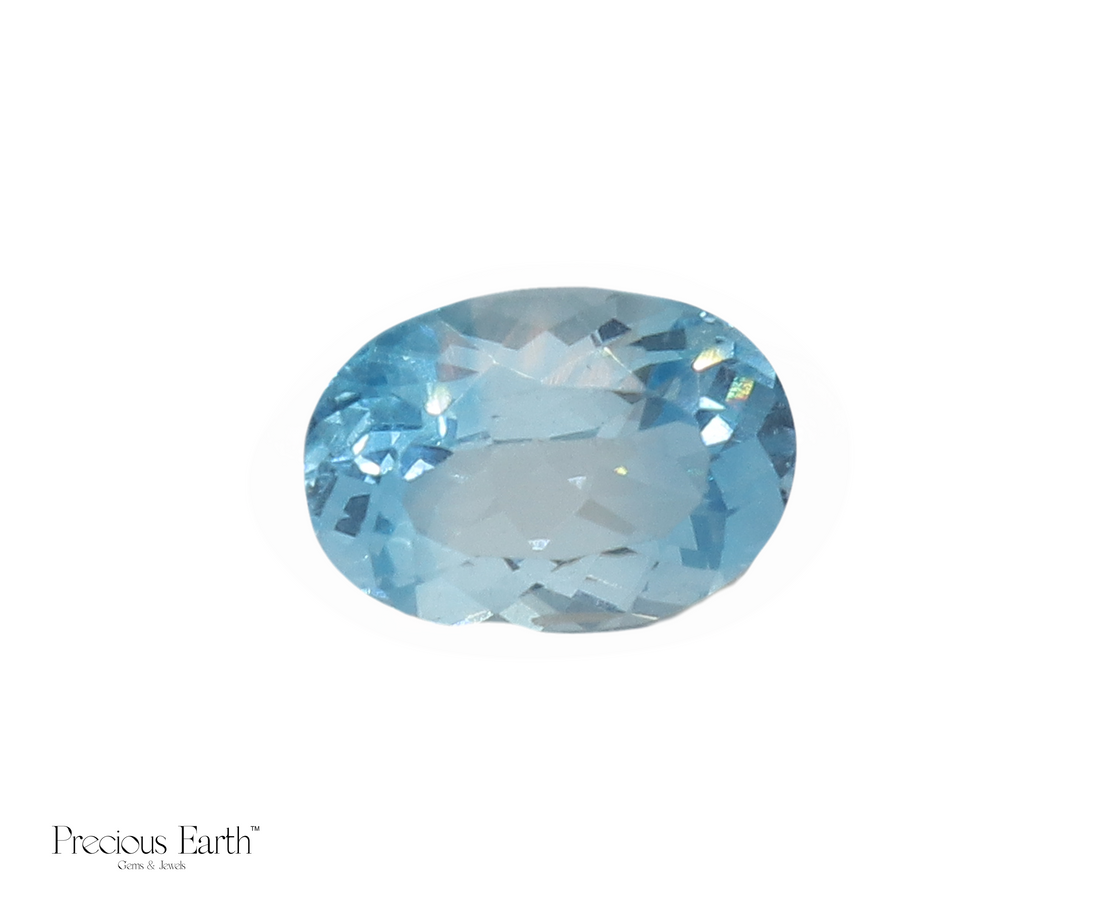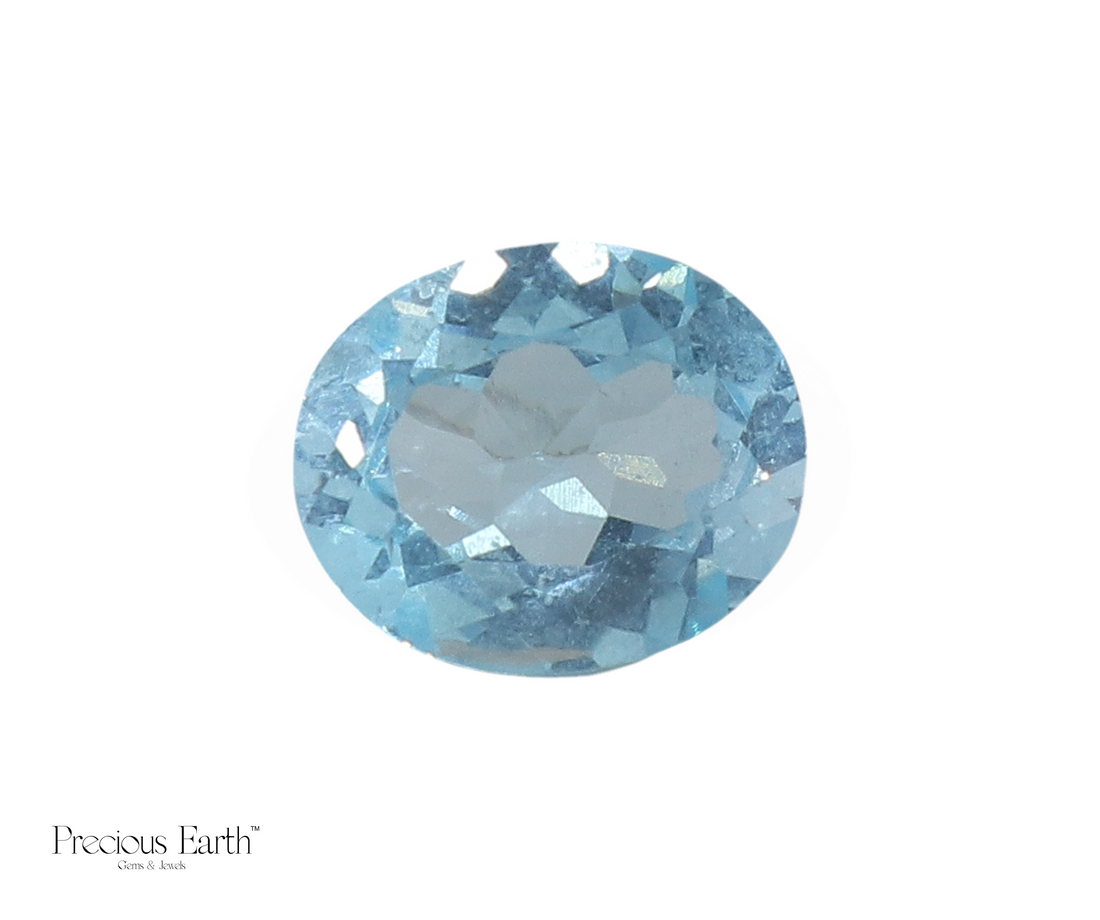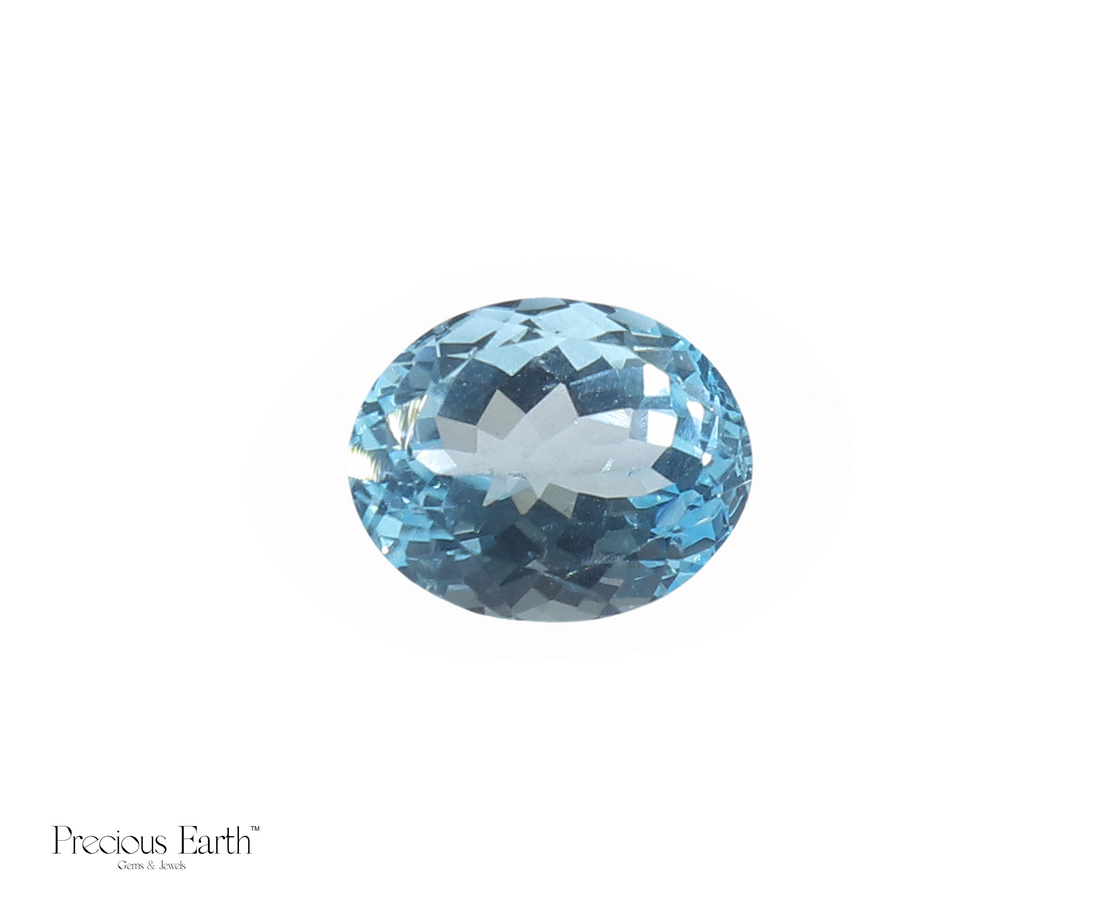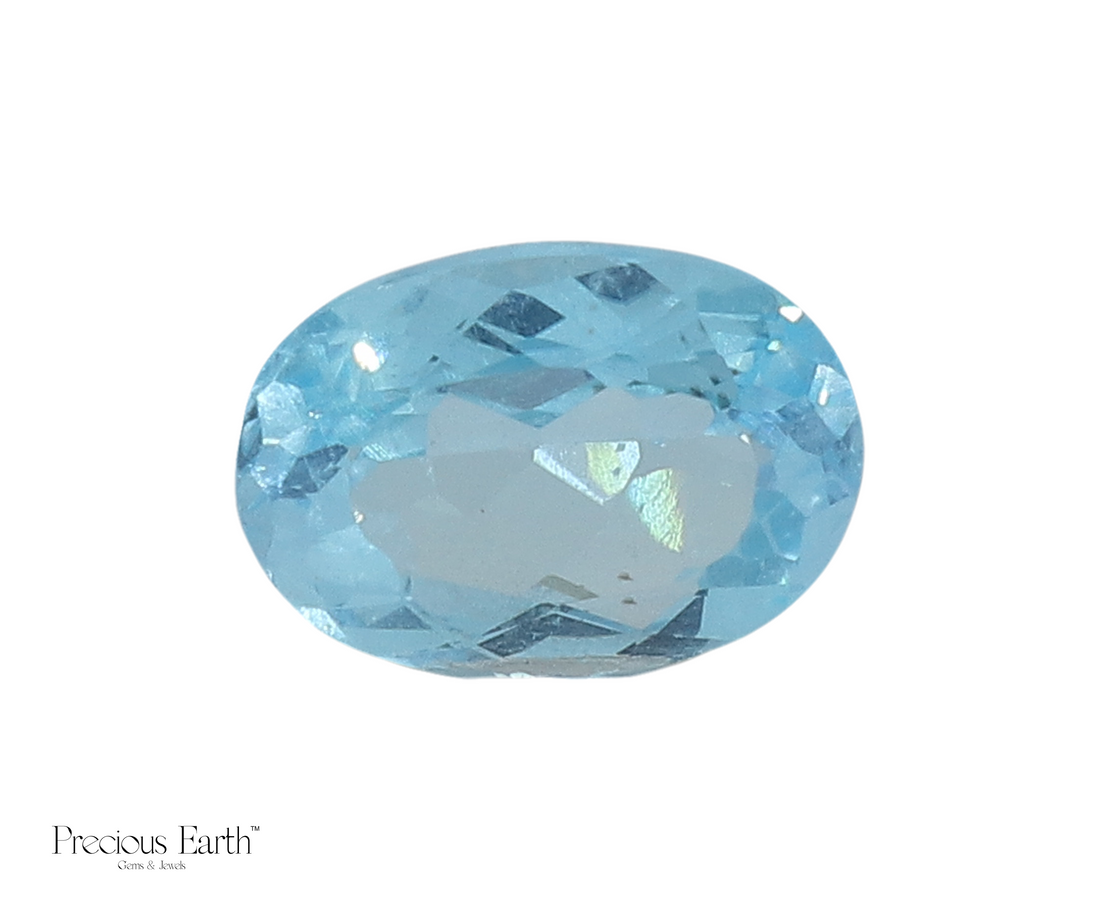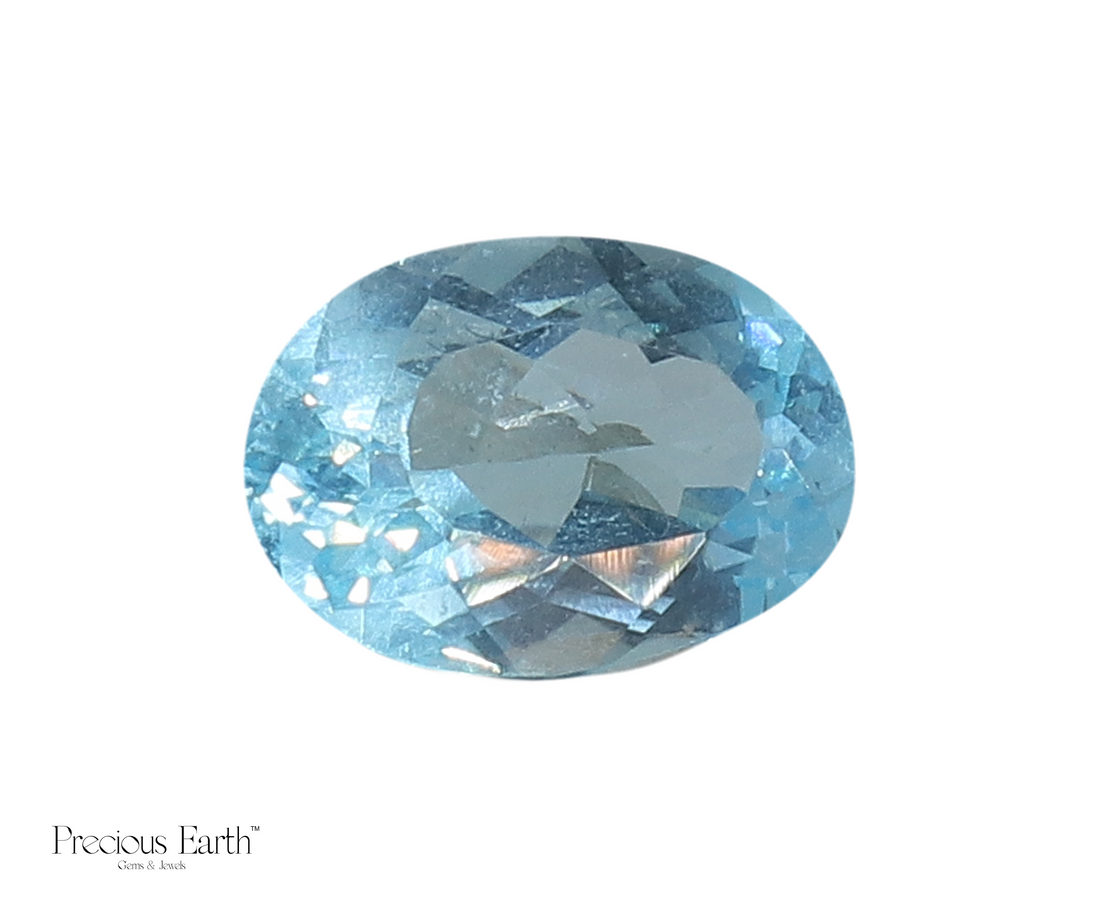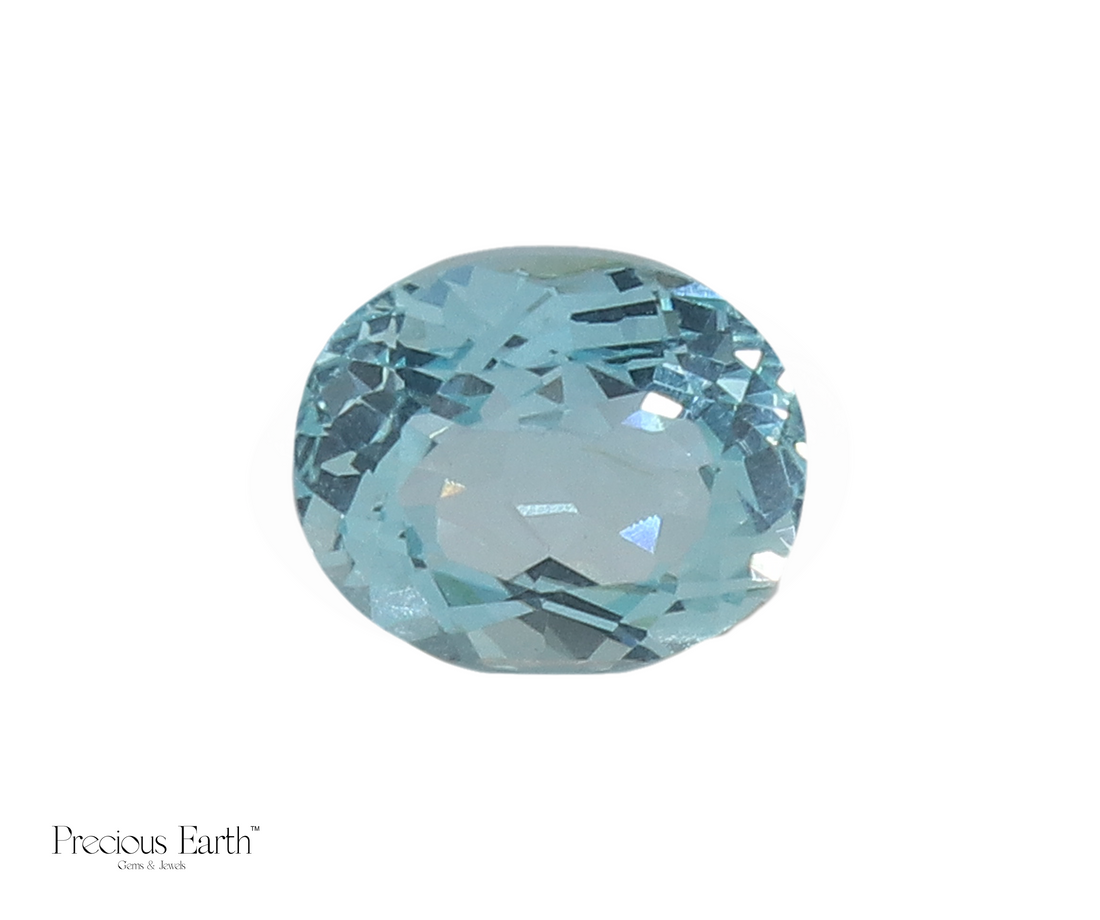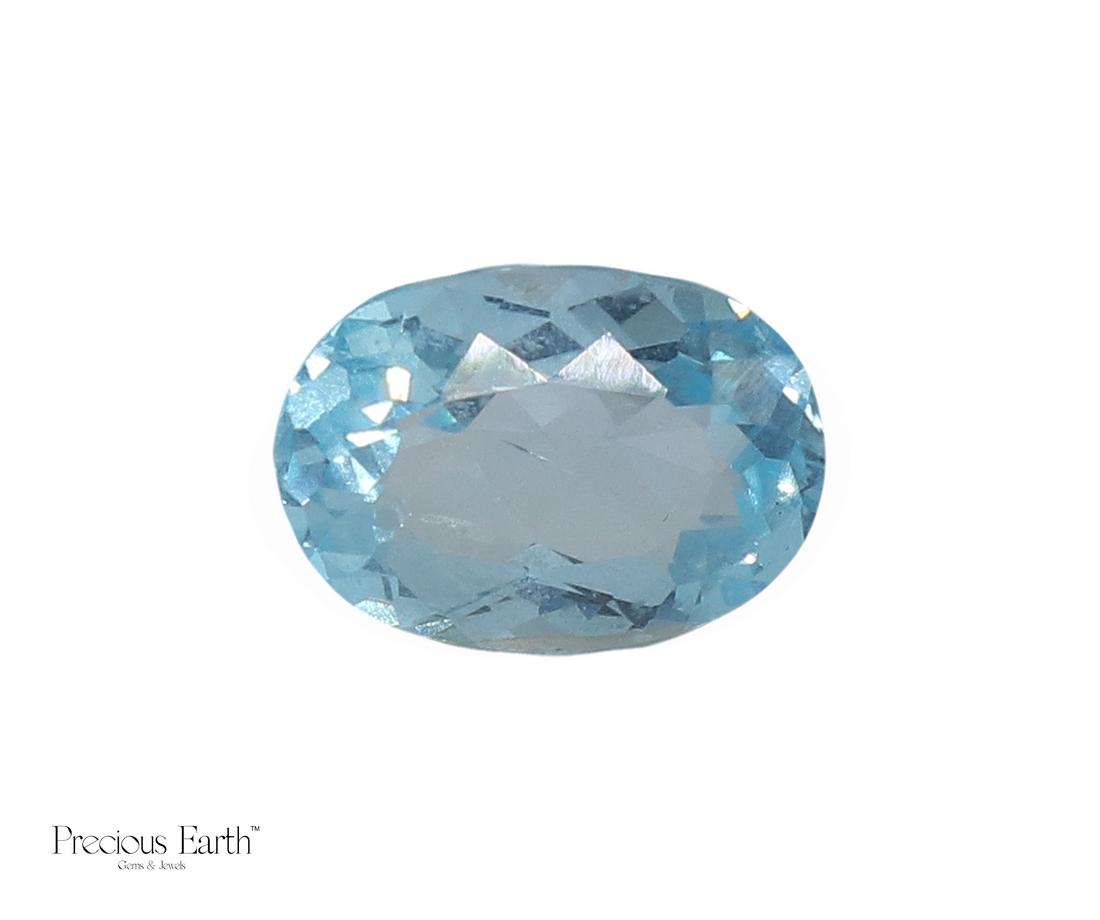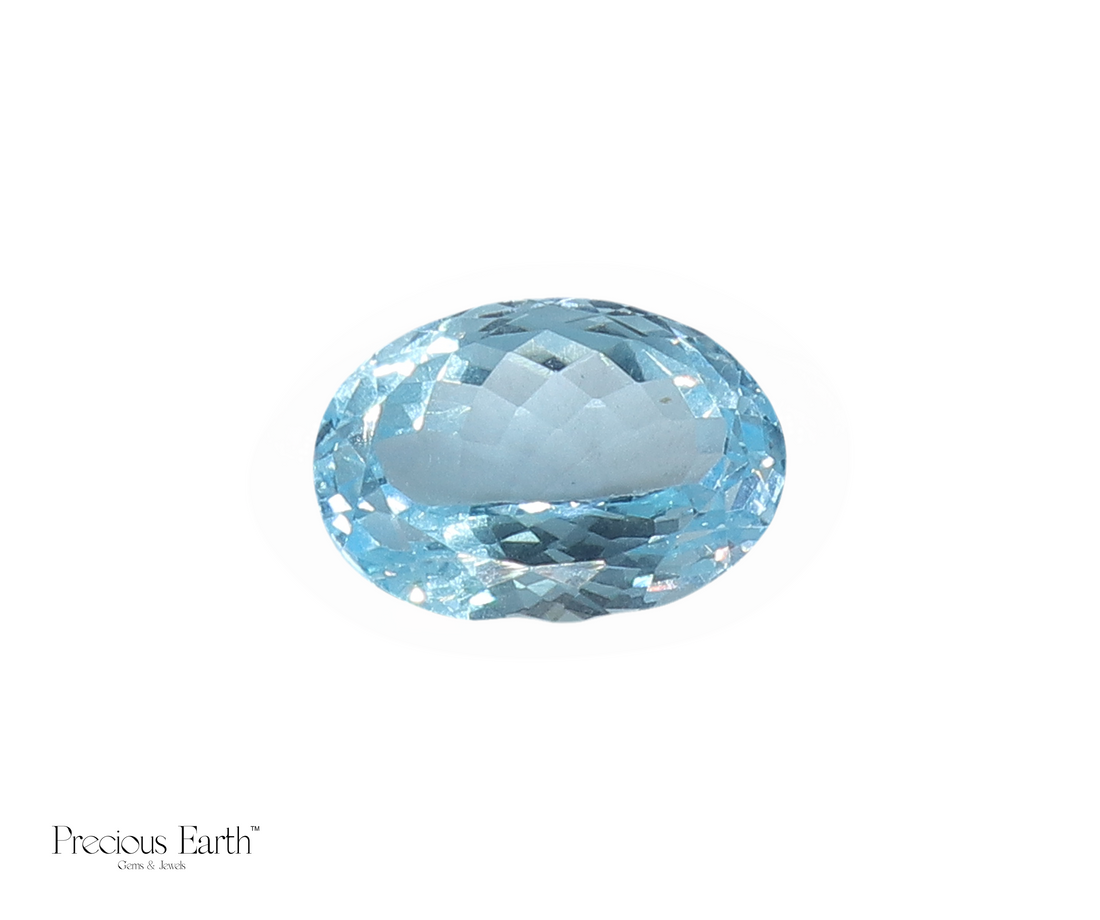Blue topaz is a stunning gemstone known for its captivating blue hues and crystal clarity. Its vibrant color and affordability make it a favorite in the world of jewelry. Topaz belongs to the silicate mineral group and is primarily composed of aluminum and fluorine.
Historically, the stone has been cherished for its beauty and mystical properties. It has been used in royal jewelry and talismans, known to bring protection and clarity to the wearer. In recent years, it has seen a resurgence in popularity. This revival is also fueled by its availability in different shades, from pale sky blue to deep London blue, making it a versatile choice for modern jewelry designs.
In this comprehensive guide, we will explore the fascinating world of blue topaz, including its formation, occurrence, and the geological processes behind its creation. Additionally, the guide will cover the various color variations of blue topaz, influenced by its unique chemistry and treatments, astrological significance, and the criteria that determine its quality and pricing.
1. Blue Topaz: Formation & Occurrence
Blue topaz forms through complex geological processes involving both metamorphism and magmatic activity. These processes take place deep within the Earth, where high temperatures and pressures facilitate the growth of this beautiful gemstone. The chemical composition of blue topaz is Al₂SiO₄(F, OH), which categorizes it as a member of the silicate mineral group. The orthorhombic crystal structure of topaz contributes to its exceptional clarity and brilliance.
The stone is typically found in granitic pegmatites and hydrothermal veins, often in association with minerals such as quartz. It is often compared to sapphire and aquamarine due to its striking blue color.
 Rough topaz crystals
Rough topaz crystals
2. Where is Blue Topaz Found?
Topaz is mined in several key locations around the world, each contributing to the global supply of this exquisite gemstone. Minas Gerais, Brazil, is renowned for producing high-quality topaz stones, including blue topaz which is usually irradiated. The region's pegmatite deposits yield some of the finest specimens available on the market. In the United States, notable deposits are found in Texas and Utah. The topaz from these regions is highly prized for its clarity and size.
Sri Lanka (Ceylon) is another significant source, known for its beautiful blue topaz stones that often exhibit excellent color and clarity. Other notable sources include Nigeria, Russia, and Madagascar, where topaz is found in varying quantities and qualities, contributing to the diverse range of blue topaz available globally.
3. Colour Range of Blue Topaz
The color ranges from deep greenish blue of London blue topaz, the medium blue of swiss blue, and the paler blue tones of sky blue and glacier blue.
- Sky Blue: This variety is a light, airy blue that is often associated with clear skies.
- Swiss Blue: Known for its bright and vibrant blue color, swiss blue topaz is a favorite in the jewelry industry.
- London Blue: This type has a deep, intense blue with a slightly greenish tint, making it a popular choice for high-end jewelry.
 Color range of blue topaz
Color range of blue topaz
Besides blue, the stone naturally occurs in a range of other colors, such as reds, pinks, and yellows. The diversity in color makes it a versatile gemstone suitable for various types of jewelry and designs like rings, necklaces, or earrings.
4. Common Inclusions in a Blue Topaz
Inclusions are common in many gems and can impact their clarity and overall value. Topaz stones may contain several types of impurities, which are internal features that form during the crystal's growth. Some common inclusions include:
- Octahedral Crystals: These are tiny, often transparent crystals that form in an octahedral shape within the host topaz.
- Carbonates: These are minerals that can appear as small, white, or colorless patches.
- Apatite Crystals: These are needle-like crystals that can sometimes be seen with the naked eye or under magnification.
- Rutile Needles: Thin, hair-like fragments that can create a star-like pattern within the gemstone.
These impurities, while sometimes considered imperfections, can also add unique character to each stone. The presence and visibility of deposits are key factors in evaluating the quality of the stone.
5. Common Treatments & Enhancements of Blue Topaz
The captivating color of blue topaz is significantly influenced by trace elements and treatment processes. While natural blue topaz does exist, it is extremely rare. Virtaully all of the blue topaz gemstones in the market today have been irradiated or heated or both. When the stone undergoes irradiation and heat treatment, these elements are activated, enhancing the stone’s natural color. The stone often undergoes various treatments and enhancements to improve its appearance and durability. The most common techniques include:
- Irradiation: Blue topaz gemstones often undergo irradiation treatments to enhance their vibrant blue color. This process involves exposing the stones to radiation, which transforms their natural hues into a rich, deep blue. Post-irradiation, the gemstones are usually heat-treated to stabilize their color and ensure it remains vivid over time.
- Fracture Filling: This method involves filling surface-reaching fractures with a glass-like substance to improve clarity.
- Heating: Applied after irradiation, heating helps achieve the desired blue hue.
- Diffusion: This process introduces coloring agents into the surface layer of the topaz to enhance or change its color.

Virtually all blue topaz gems in the market today are irradiated, or heated, or both (Source: Pinterest)
Before treatment, blue topaz may appear colorless or exhibit a pale blue hue. Irradiation followed by heat treatment transforms these stones into the striking blue varieties that are highly valued and suitable for jewelry. It's important to note that these treatments are considered stable and permanent, with the color not fading over time. However, it's always best to consult with a reputable jeweler or gemologist and ensure that any stone you are considering purchasing is lab certified, so you are fully aware of its treatment history.
| Mineral | Topaz is a silicate mineral |
|---|---|
| Colour Span | Sky Blue, Swiss Blue, London Blue, etc. |
| Popular Origins | Brazil, Sri Lanka, Nigeria, Russia, United States, etc. |
| Mohs Hardness | 8.00 (on a scale of 10) |
| Common Treatments | Irradiation, Heat Treatment |
| Birthstone | December |
Blue Topaz - A Quick Snapshot
5. Evaluating the Quality of Blue Topaz
When evaluating the quality of the gem, several criteria are considered to determine its value and appeal:
- Color: Color is the most critical factor in determining the quality of the stone. The most desirable hues are vivid and saturated. The more intense and uniform the color, the higher the value of the gemstone.
- Clarity: Clarity refers to the presence of visible impurities or blemishes within the gemstone. High-quality topaz should be free of visible inclusions, giving the stone a clear and pristine appearance. The fewer the impurities, the higher the gemstone's value.
- Cut: The cut of a stone also significantly impacts its brilliance and overall appeal. A well-cut topaz will display maximum sparkle and light reflection, enhancing its natural beauty. Precision in cutting is crucial, as it ensures that the facets are perfectly aligned to catch and reflect light. Common cuts include round, oval, and pear shapes, each offering different levels of brilliance and appeal.
- Carat Weight: Carat weight measures the size of the gemstone. Larger stones are rarer and generally more valuable. However, the quality should not be compromised by size alone. A balance of carat weight with color, clarity, and cut is essential for determining the overall value of the gemstone.
7. Blue Topaz Pricing
The cost of blue topaz varies based on its quality, including factors such as color, clarity, cut, and carat weight. The sky blue variety typically ranges from $3 to $18 per carat. It is the lightest and often the least expensive type of blue topaz. Swiss blue topaz known for its vibrant and bright blue color, generally costs between $7 and $20 per carat. The deepest and most valued blue variety, London blue topaz is priced between $10 and $25 per carat for stones up to 1 carat and between $15 and $50 per carat for larger stones.
8. Blue Topaz in Astrology
Blue topaz holds a special place in astrology and crystal healing practices. As a birthstone for December, it is believed to carry unique energies and healing properties that benefit those born in this month. It symbolizes love, fidelity, and clarity of thought. Wearing the stone is believed to bring good fortune, enhance creativity, and promote self-expression. Its calming blue hue is said to soothe emotions and bring a sense of peace to the wearer.
In the realm of crystal healing, the gem is believed to possess powerful healing properties. It is associated with the throat chakra, which is the energy centre related to communication and self-expression. Aligning the throat chakra with the stone can help improve one's ability to articulate thoughts and feelings clearly and effectively. Additionally, blue topaz is thought to enhance mental clarity and focus, aid in emotional healing by alleviating stress and anxiety, and promote relaxation and tranquillity.
In conclusion, blue topaz is a gemstone that combines aesthetic appeal, practical durability, and mystical properties, making it a popular choice for various types of jewelry, including rings, earrings, and pendants. With its vibrant hues and a hardness of 8.00 on the Mohs scale, it is durable enough for everyday wear.
Often compared to other blue gemstones like aquamarine and sapphire, blue topaz stands out for its affordability and brilliance. While gems such as opal, amethyst, aquamarine, and sapphire may be more valued for their deeper hues, phenomenon, and historical significance, blue topaz remains a favorite for those seeking beauty without the higher price tag. Whether you are drawn to its stunning color, healing properties, or role as a birthstone, blue topaz is a gem that captivates and delights, offering a blend of elegance and practicality.

